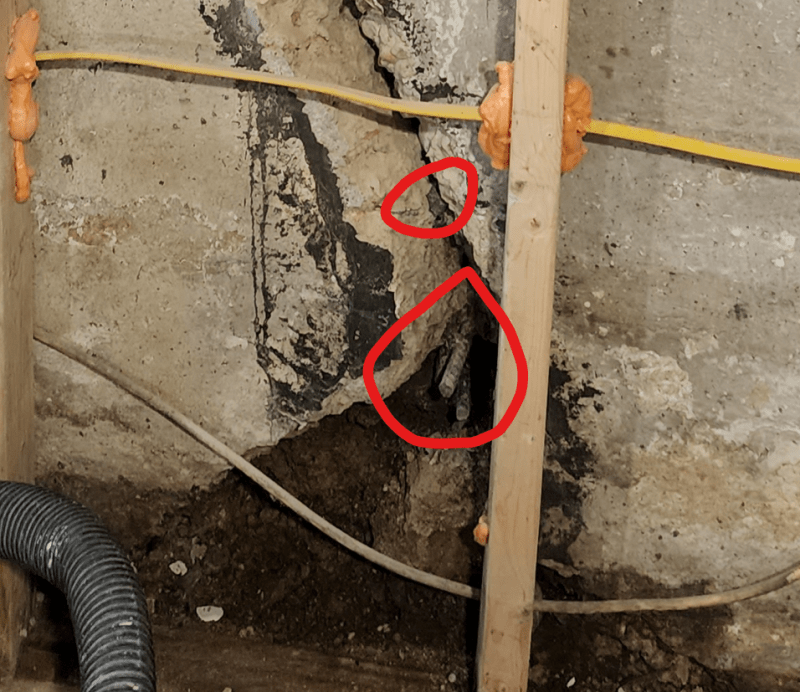I recently visited a single-family house with multiple wide cracks in the concrete basement wall. It's quite old and no reinforcement is visible. The client shared that they have minimal water intrusion through the cracks and I can see why that is. There's an 8-foot addition beyond the basement wall that cause the water to run away from it for the most part. I doubt if there are any immediate structural concerns and don't think any remedies beyond proper sealing of the cracks are necessary. But my question is what could have possibly caused such cracks. There are no signs of settlement or any other cracks in the floors above. Any thoughts? I've included a picture.
Navigation
Install the app
How to install the app on iOS
Follow along with the video below to see how to install our site as a web app on your home screen.
Note: This feature may not be available in some browsers.
More options
Style variation
-
Congratulations cowski on being selected by the Eng-Tips community for having the most helpful posts in the forums last week. Way to Go!
You are using an out of date browser. It may not display this or other websites correctly.
You should upgrade or use an alternative browser.
You should upgrade or use an alternative browser.
Large Vertical Cracks in Basement Wall
- Thread starter AraEng
- Start date
- Status
- Not open for further replies.
@dik has pointed out the potential weakness of the wall, the concrete may contain a large number of calcium deposits that may cause the wall to deteriorate further. I suspect/guess that, on top of seepage, the wall is mostly moist during the high water season. If that is the case, there is no easy way to fix this problem, short of waterproofing the exterior face. If unattended, the wall can crumble away sooner or later.
I disagree with the shrinkage crack postulation. Shrinkage cracks vary from hairline to slightly larger. Shrinkage also occurs soon after construction. If this is an old structure, why is it being reported as a problem now? This is a gaping discontinuity in the wall, not to mention the large hole at the bottom of the wall. The rebar poking through suggests that there is a structural element that ties into this wall on the other side. Since this is residential, there is probably not alot of vertical load on the wall. I bet the damage occurred during construction (perhaps during the addition) and an excavator or other piece of equipment hit the wall or ran into it. It also looks like there is spalling or a groove that follows the crack on the surface. Not sure if this occurred because of the crack or maybe it was a poorly executed repair attempt?
Why? Poor concrete, zero reinforcement, poor backfill, poor floor diaphragm connection.... Unless you have an impermeable cover at the top of the fill water finds its way into the backfill. What instigated the investigation? Perhaps a pending sale? In many cases the repair involves digging it up and constructing new foundations.
The OP said there were multiple wide cracks. So that implies a systemic problem or cracking that occurs in a pattern, like shrinkage.
I also suspected the addition playing a role. A pre-existing shrinkage crack would provide a weak plane that opened up under a new out-of-plane load.
I also suspected the addition playing a role. A pre-existing shrinkage crack would provide a weak plane that opened up under a new out-of-plane load.
I agree with MotorCity. The "crack" looks more like a wall failure than a shrinkage crack. The "crack" looks very old and maybe had some black waterproofing added some time ago. The "crack" could have gotten worse when the addition was excavated.
- Status
- Not open for further replies.
Similar threads
- Replies
- 15
- Views
- 5K
- Locked
- Question
- Replies
- 3
- Views
- 5K
- Replies
- 23
- Views
- 8K
- Question
- Replies
- 7
- Views
- 1K
- Locked
- Question
- Replies
- 9
- Views
- 2K

